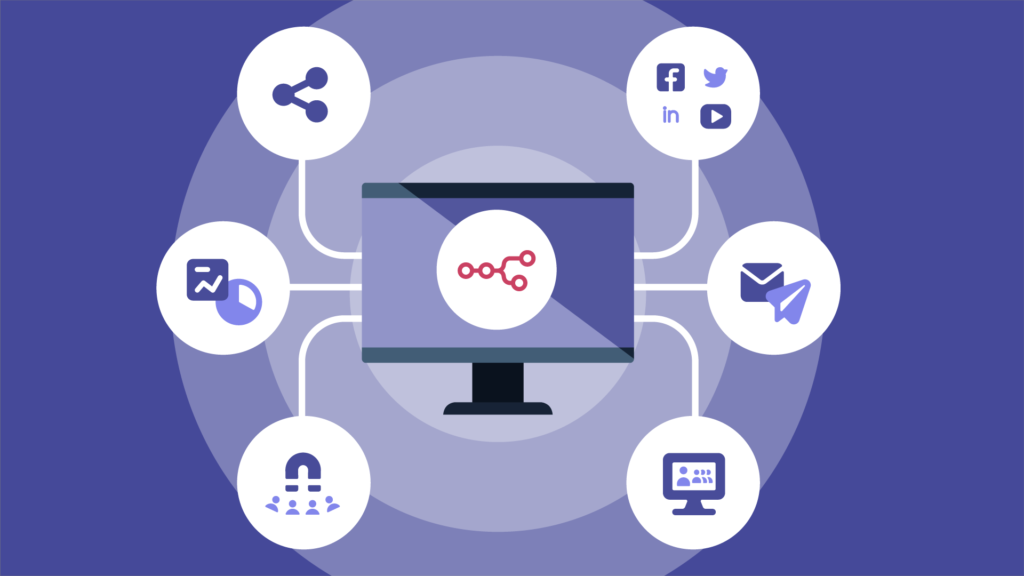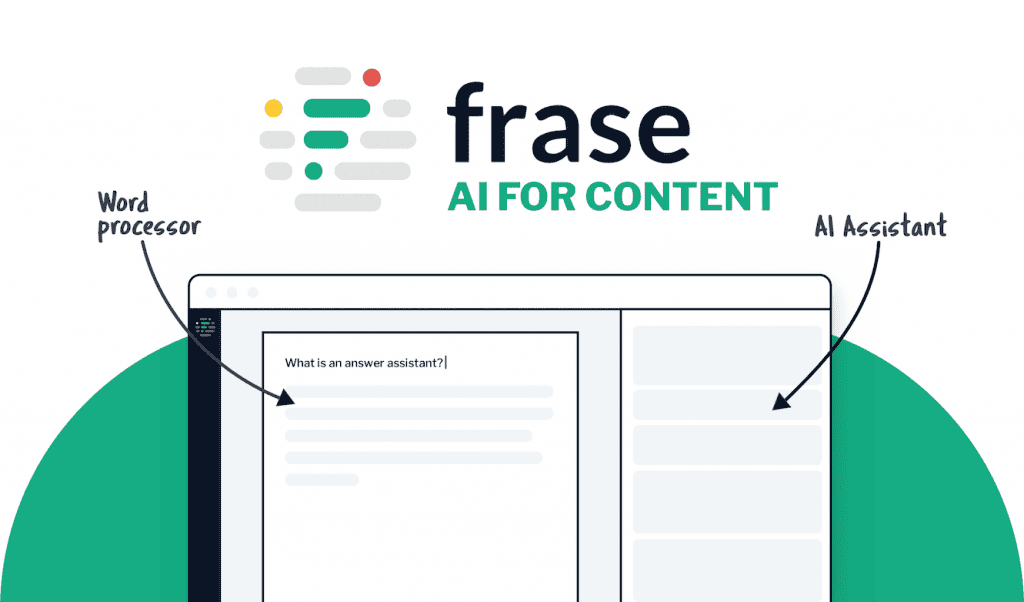Content Automation: Streamlining Content Creation and Marketing
Content automation uses software to create, edit, publish, schedule and distribute content. It is part of content marketing automation, which automates digital marketing content creation.
The idea behind content automation is that if you can automate the creation and distribution of content, you can get more done with less effort. Businesses can reduce costs and improve efficiency by automating some or all parts of the content lifecycle, such as semantic analysis or natural language processing (NLP).
Content automation has transformed how businesses approach content creation and marketing. Instead of relying on manual processes alone, they can also use software to help streamline workflows so that high-quality copy reaches its target audience faster.
Nowadays, AI and technologies such as NLP have enabled companies to create personalised pieces at scale.
Table of Contents
How Does Content Automation Work?

Content automation software leverages a range of technologies to automate manual processes in content marketing, including artificial intelligence (AI), natural language processing (NLP) and generation (NLG). AI can help with everything from ideation and generating content recommendations to proofreading, personalisation, SEO recommendations and updating existing content. NLP and NLG enable text-based content creation by automatically developing copy using predefined templates and rules. While machine-generated copy can be created – it typically still requires some human involvement.
For example, AI-powered tools for automating content creation can sift through vast amounts of data and generate insights to shape a brand's overall strategy. These might include cues about trends or keywords or information about audience preferences – helping brands create more relevant, impactful output. Meanwhile, NLP/NLG technologies automate the process of creating copy based on predefined templates/rules, which is useful when standardised items such as social media posts or product descriptions are needed at scale.
Tools used in crafting a strategy around content automation include Quark (content lifecycle management software that offers automated workflows alongside functionality for creating/formatting materials across device types); Divvy HQ (a central platform supporting planning/collaboration/publishing); PathFactory (streamlines the “content journey”, making it possible to deliver personalised experiences at scale); Uberflip helps businesses centralise/organise their branded material under one roof before adding personalisation layers.
The Benefits of Using Content Automation

Content automation provides several advantages for businesses involved in content creation and marketing. For one, it increases efficiency by automating repetitive tasks, freeing up marketers to concentrate on more strategic work. Not only does this save time and resources, allowing businesses to produce more content in less time, but it also provides workflow automation, streamlining production and distribution. By automating these processes, a company can ensure that its content is created, reviewed, approved and published promptly.
The second advantage of content automating is that it helps improve customer experience by providing personalised and relevant content at scale. Automation tools can segment audience groups (or people), generate tailored copy ( or text), and then deliver the right message through the right channel.
Another advantage is that regulatory compliance can be ensured by automating the governance of contact approval processes
Overall benefits include:
– Saving Time
– Doing More Content
– Ensuring Effective Content Marketing Campaigns
– Giving The Audience A Great Experience
A use case for these kinds of capabilities lies within e-commerce. Imagine being able to automatically generate product descriptions as well as update inventory details whilst simultaneously publishing new pages across all your channels. Such an approach would save valuable time, but consider how accurate you could be.
By removing some manual aspects, companies can focus efforts elsewhere – such as on customer service or strategic planning.
Challenges and Limitations of Content Automation
Content automation may have a rich set of advantages but it comes with challenges and limitations. One significant challenge is the capability to generate high-quality, engaging content that resonates with an intended audience. While AI and NLG technology have come a long way in this area, input from human beings remains vital to guaranteeing authenticity and creativity in content offerings – hence the incorporation of human writers into the robot co-worker model. Other issues include the need for expertise to get the best out of these tools, training people and getting them integrated into existing workflows – plus striking that balance between automated assistance and letting humans do what they're good at.
Content automation might make companies vulnerable if they rely solely on automated copy, which fails to engage or resonate. As well as not having taken off more quickly than it did because it's complicated stuff to do well (see above), businesses like Phrasee would probably argue that taking something creative like writing copywriting – an art form no less – sticking an algorithm onto it and expecting great things was never likely to be a winner.
Either way, you look at it, though, plenty of barriers still stand in its path.
“People don't necessarily understand how much content machines can generate,” said Stacey MacNaught, head of search marketing consultancy Tecmark. “The work we've done around automation has been limited.”
Examples of Content Automation Tools and Platforms

If you're a business looking to automate your content creation and marketing processes, numerous tools and platforms can help. Here are some examples:
ContentBot.ai: Offers a range of automation tools, including SEO tooling, email automation, and campaign management.
ChatGPT: An AI-powered chatbot that provides detailed and human-like responses to prompts – helpful for automating customer interactions.
HubSpot: A comprehensive CRM platform providing content automation, lead management, content management, and engagement tracking.
AdCreative.ai: Easy-to-use marketing and social media automation tooling – ideal for automating advertising content.
Quark: Provides automated workflows; creates one format for many devices, with its core feature set being workflow-based content lifecycle software.
Wordsmith: Aimed at short-form content. Can generate personalised reports or articles automatically
Extensiv: Landing page automation; build multiple optimised landing pages quickly.
These tools have various features catered towards creating and marketing your content. Using them together lets you streamline production processes by utilising their unique capabilities.
For example… With ContentBot.ai, you could automate making your existing (or new) copy more search engine friendly. The platform has an SEO tool that takes an article/page/post/whatever text and then analyses it before suggesting changes to improve keywords used in the article and improvements on meta tags, etc. By doing this kind of work, automatically, vast amounts of time in writing individual pieces is saved, which allows focus on generating high-quality copy instead!
How Can Content Automation Be Used in Businesses?

Various applications of content automation are available to businesses to help streamline their marketing and content-making. It can assist in multiple areas, including research and management, creation, publication and distribution, SEO optimisation, analytics and insights. One example is creating an email campaign; with the right tools, you can create a personalised campaign automatically sent to people in your database. These tools also provide ways to segment your audience, suggest relevant content ideas or themes for your email campaign, and automate scheduling and tracking.
You save time by not manually reviewing each subscriber's profile or considering what topics might interest them. Instead, you can use a tool that does this work for you using data from prior campaigns (content automation tools are pretty clever at learning over time what people like based on their previous interactions) or even demographic information such as age range or location. In short, it helps ensure campaigns hit the mark – they'll be more targeted, relevant and, therefore, better received.
This includes producing things such as blog posts, social media updates/adverts created automatically, so it takes less time/thought than doing everything manually (as discussed above). But it could also apply equally to product descriptions – anything involving copywriting.
Let's look at another example of how businesses could utilise content automation: optimising website pages for search engines like Google. Sometimes, this will include adding keywords/meta tags/structuring the page correctly so search engines understand them better (e.g. figuring out what words should appear in headings/subheads within articles).
By being proactive about these things rather than relying on someone else spotting mistakes before they get published online, you're going to save yourself some headaches down the line – plus, you probably end up attracting more organic traffic initially than if no one had taken steps beforehand!
Finally, analysis/insights- there's nothing worse than creating lots of content only to find it doesn't perform as well as you'd hoped/expected.
That's where content automation tools can help, too – by providing analysis of things such as social media updates, blog posts or even email campaigns (how many people opened/clicked on a link within them, etc). Armed with this information, businesses can make more informed decisions about what future content should look like. For example, maybe they discover most success comes from publishing shorter-form blog posts rather than long-form ones – so they tweak their strategy accordingly.
Automated Content vs AI Content
Automated content and AI content are two related but distinct terms. Automated content is creating, editing, and distributing content using software and technology. Content automation tools are an example of automated content.
AI-generated content is another term used in this context. It references a more advanced automated marketing material that employs artificial intelligence techniques like natural language generation (NLG) or natural language processing (NLP). This can generate responses that closely resemble human writing styles.
A proportion of AI-created goods might be referred to as “automated,” yet not all AI-written material can be characterised in such a manner.
As an illustration, employing templates and rules to create social media posts automatically with a dedicated tool could be seen as automated written material. Conversely, utilising NLG/NLP technology so chatbots may produce unique replies or analyse data points before crafting personalised email messages would likely be considered AI-produced items rather than “automated” ones – despite both being examples of automation/AI in practice.
How Content Automation Improves SEO Optimisation

SEO optimisation can be significantly enhanced through the use of content automation. Available content automation tools can suggest metadata, keywords, and content structure based on best practice SEO. They can analyse content to show how it could be improved to ensure search engine optimisation is implemented. Businesses will save time and effort if they automate this process of optimising SEO so they can concentrate instead on producing high-quality content which their target audience will find interesting.
In addition, by automating processes like these with content automation, a business's SEO efforts could be scaled up easily as large volumes of optimised copy can quickly be produced using the technology.
An example is an app automatically analysing copy before suggesting suitable keywords for inclusion. It might also recommend metadata tweaks such as meta tags or descriptions that would help improve its visibility to search engines. Using automated systems like this when optimising SEO ensures many more people see online copy organically and drive traffic towards a particular website, thereby raising its profile on platforms including Facebook and Twitter.
Is Content Automation Suitable for All Types of Content Creation?
While content automation can prove advantageous for several aspects of producing content, it may only be suitable for some areas. Content automation tools work exceptionally well to create volumes of standardised content, such as product descriptions, social media posts and email campaigns. However, it may still be necessary to include human involvement when crafting highly creative or personalised content or any content that demands a high level of expertise.
For example, using standardised software programs or systems to produce in-depth thought leadership articles might not have the desired results. Similarly, highly creative and original output might suffer if too much reliance is placed on automatic production methods without enough human intervention.
The need for human intervention will often depend on your goals and what you want your output to achieve. If your business specialises in producing unique and creative material that defines your brand, automated systems could only replicate this level of creativity and originality with some human input.
Where consistency and efficiency are vital in delivering standardised material, automated procedures can effectively speed up the creation process.
Factors to Consider When Choosing a Content Automation Tool
When selecting a content automation tool, various factors need to be considered. For starters, you should research and understand the features and capabilities of any tool to ensure they meet the specific needs of your business when creating or marketing content.
Next, evaluate how easy and intuitive each tool is – in other words, will it be user-friendly for your company's content creators or marketers?
Also, consider whether the tools you're evaluating can scale up as your organisation's requirements change over time.
Another important factor is cost versus value – does a particular tool offer a good bang for the buck compared with competing options in the market?
For instance, do they feature all the functionality your business requires for creation or marketing? Are they easily adoptable by those who create or market your company's wares? Can they handle future growth and new requirements from a flexibility point of view? And lastly, how do their prices stack up against other offerings regarding overall returns on investment?
Conclusion
Are you ready to supercharge your business? With content automation, you can streamline your content creation and marketing – saving time and money while enhancing efficiency and ROI. By using smart technology like artificial intelligence (AI) and natural language generation (NLG), it's possible to automate repetitive tasks, optimise search engines, and deliver personalised content that hits the spot for each target customer.
The trick is getting the balance right: Don't let human input or creativity go down the plughole in an ocean of automation. Get it wrong – size matters here – and you could be wasting time, money or both.
But get it right by selecting tools/platforms focused on your needs/goals, keeping people at the heart of what you do … then watch as automation takes off like a rocket.
